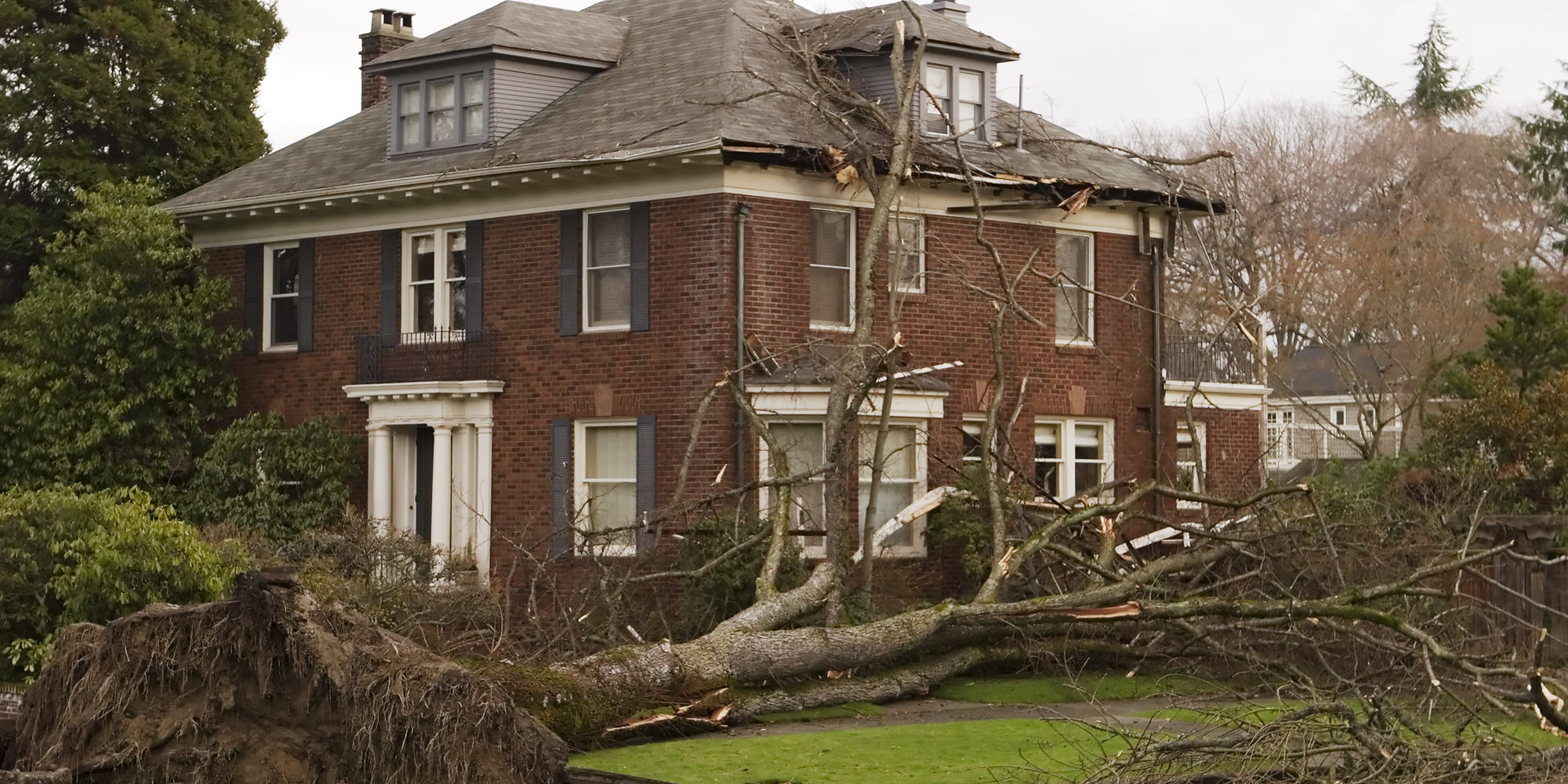For any homeowner, it is very important to keep your trees trimmed. At the very least, you have to make sure that your home doesn’t have any large limbs overhead. Tree limbs are one of the few natural hazards that can destroy your home in one fell swoop, so it’s not a risk to be taken lightly.
Of course, this article isn’t meant to focus on prevention. Today, we are going to discuss the steps you should take if your home has just suffered serious damage from a falling tree limb. We advise you to consider the following as your emergency plan to be amended as you see fit.
Step 1: Assess The Damage
The very first thing you should do after an accident is to make sure that no one has been hurt. You might also want to check on any pets you have. While property can be replaced, life and health cannot.
Once you have verified that everyone is ok, you need to step outside and take a look at the power lines. Any time a tree limb does damage to your roof, there is a chance that power lines could be pulled loose or damaged. This creates a risk of electric shock, and the kind of current that goes through a power line is enough to cause near-instant death. If you see anything funny about the power lines at all, you should immediately get everyone out of the house and report the problem to your power company.
Finally, you should try to look at the damage to your roof. It’s usually not a good idea to climb onto your roof for the inspection, but it’s usually not necessary anyway. The use of binoculars or some other magnifying device (monocular, telescope, rangefinder, rifle scope, etc.) can be very helpful at this stage. Make sure you take plenty of good pictures at this point, making sure that all the damage is clearly visible.
Step 2: Call The Insurance Company
In the aftermath of a disaster like this, one of the most pressing questions on your mind is likely to be the question of paying for the repairs. After all, extensive roof repairs are not cheap, and a lot of people don’t have the means to cover it on short notice. Luckily, those with good homeowner’s insurance should be just fine in this department.
Any homeowner’s insurance plan will cover tree damage, although there will be limits to that coverage. First, they probably won’t pay the full amount of the repair unless you have a top-grade plan. However, they will probably handle the majority of the costs, making it easier for you to cover the rest.
When it comes to surrounding structures like garages, sheds, etc., most insurance companies are a little less willing to help. Most homeowner’s insurance plans will have a 10% cap on the amount of money they will pay out for these kinds of repairs, mostly because they are deemed to be non-essential.
Those pictures you took are going to be very helpful at this point. Your insurance company should send an inspector right away so that the damage can be evaluated, and it’s always good to show them plenty of evidence regarding when and how the damage occurred. A lot of people try to defraud the insurance companies, so their inspectors are taught to be suspicious. Try not to take it personally, as this person is just doing their job as ordered.
Step 3: Call A Roofing Contractor
By this point, you should know what kind of damage you are dealing with, and how you are going to pay for the repairs. The next step is to call a trusted roofing contractor and schedule the repairs. Make sure you tell them that it’s an emergency, and the roof needs to be repaired right away. Make it clear to them that you cannot afford to wait very long, and that you will be forced to take your business elsewhere if they delay things.
This might seem obnoxious, but the concern is well-warranted. Until this matter is resolved, your home is open to the elements, and that can lead to water damage. The longer your roof remains open, the worse the damage will become, and the more expensive it will become.
Step 4: Cover The Hole As Best You Can
Chances are, the roofing contractor will not be able to start on the job on the same day. They should definitely send someone out to your location immediately so that damage can be assessed. If they don’t get an inspector out there in short order, you might want to call someone else. There is simply no time to waste here.
Until the damage is repaired, it would be a good idea to cover the hole in your roof by some means or another. This could be as simple as stapling/nailing a tarp to the shingles. This won’t provide a perfect seal against rain and moisture, but it will be a lot better than nothing. Make sure that you don’t do anything unsafe in the process of attaching the covering. In order to avoid climbing on the roof, you should try to attach the tarp from inside the attic, if possible. If you don’t feel you can do it safely, omit this step entirely and just put some buckets under the opening.
Conclusion
Anytime you have serious damage to your roof, you have a serious problem that needs to be addressed immediately. If there is one thing you can take away from this article, it is the need to maintain a sense of urgency. We are confident that you can deal with this problem in a safe and efficient manner, so make sure you follow these instructions and act quickly. If you have enjoyed this article, and if you would like to read more of our work, please fill out the contact form below.







